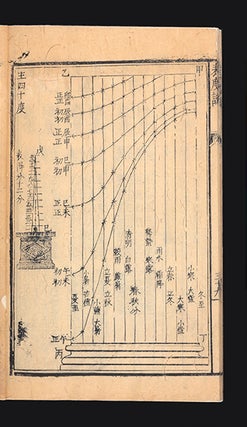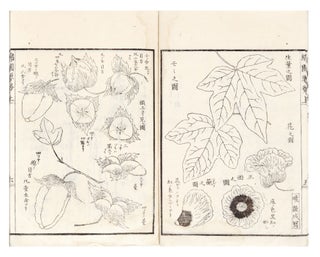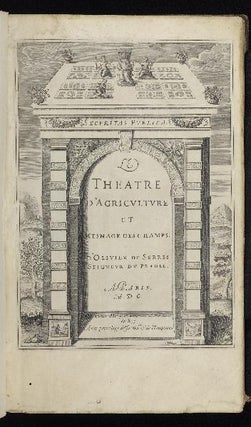“Vulgar Mathematics”
Nagasaki mujin [or mushin] monogatari [A Tale of the Nagasaki Mujin].
Two double-page & three full-page woodcuts. 14.5 folding leaves (pagination irregular but complete). 8vo, orig. patterned orange wrappers (a little soiled & rubbed), orig. block-printed title label on upper cover, new stitching. Ushu [in today’s Yamagata Prefecture],
Naraya Ichibei, 1691.
First edition of this very rare work on practical business mathematics and the use of the abacus by the wasan scholar, Nakamura Seiei (d. 1734). There is no copy of the first edition in WorldCat, which lists only the reprints of 1926 and 1935.
The Mujin (or tanomoshi), a sort of rotating savings and credit cooperative association, has existed in Japan since the middle Kamakura period (1185-1333) and was only superseded by commercial banks in the Meiji period. Mujin ko “allowed individuals to predict with a degree of certitude what return to expect from deposits made to the cooperative fund…the structure allowed it to be used as an instrument for investment. The precision with which this rotation of funds was practiced as an investment scheme to earn interest caught the attention of scholars of Japanese mathematics…The mathematical calculation of investment gains through the contract ko was documented in [the present work, whose author]…described the Nagasaki mujin as consisting of eleven positions, with withdrawals to be made once a year. An organizer or ‘parent’ figure in need of immediate capital organized the group to meet a personal emergency. The others joined for various reasons, mainly to make a profit.”–Tetsu Najita, Ordinary Economies in Japan: A Historical Perspective, 1750-1950 (University of California Press: 2009), pp. 79-80–(who fully explains the workings of a mujin).
The mujin of Nagasaki had somewhat different structures from those in other cities due to the international trade with the Dutch and the Chinese that took place there. Nakamura explains the differences in the present book. A number of practical examples are presented, especially the calculation of interest.
The first double-page image shows dockworkers loading merchandise into what appears to be a Chinese ship. The second single-page illustration depicts the abacus.
Fine copy, preserved in a chitsu (once in the stock of Shigeo Sorimachi, the great Japanese bookseller). Minor, mostly marginal, staining.
Price: $6,500.00
Item ID: 8829

![Item ID: 8829 Nagasaki mujin [or mushin] monogatari [A Tale of the Nagasaki Mujin]. Seiei NAKAMURA.](https://jonathanahill.cdn.bibliopolis.com/pictures/8829.jpg?width=768&height=1000&fit=bounds&auto=webp&v=1677582685)
![Nagasaki mujin [or mushin] monogatari [A Tale of the Nagasaki Mujin].](https://jonathanahill.cdn.bibliopolis.com/pictures/8829_2.jpg?width=320&height=427&fit=bounds&auto=webp&v=1677582685)
![Nagasaki mujin [or mushin] monogatari [A Tale of the Nagasaki Mujin].](https://jonathanahill.cdn.bibliopolis.com/pictures/8829_3.jpg?width=320&height=427&fit=bounds&auto=webp&v=1677582685)



